
How to Use ESP32 (38 pins): Examples, Pinouts, and Specs
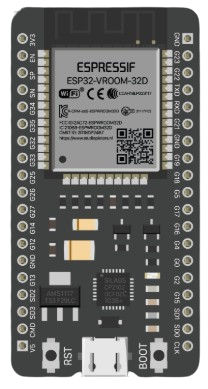
 Design with ESP32 (38 pins) in Cirkit Designer
Design with ESP32 (38 pins) in Cirkit DesignerIntroduction
The ESP32 is a powerful microcontroller with integrated Wi-Fi and Bluetooth capabilities, making it an ideal choice for Internet of Things (IoT) applications and embedded systems. With its 38 pins, the ESP32 offers a wide range of input/output (I/O) functions, including digital and analog pins, PWM, I2C, SPI, UART, and more. Its dual-core processor and low-power modes make it suitable for both high-performance and energy-efficient applications.
Explore Projects Built with ESP32 (38 pins)
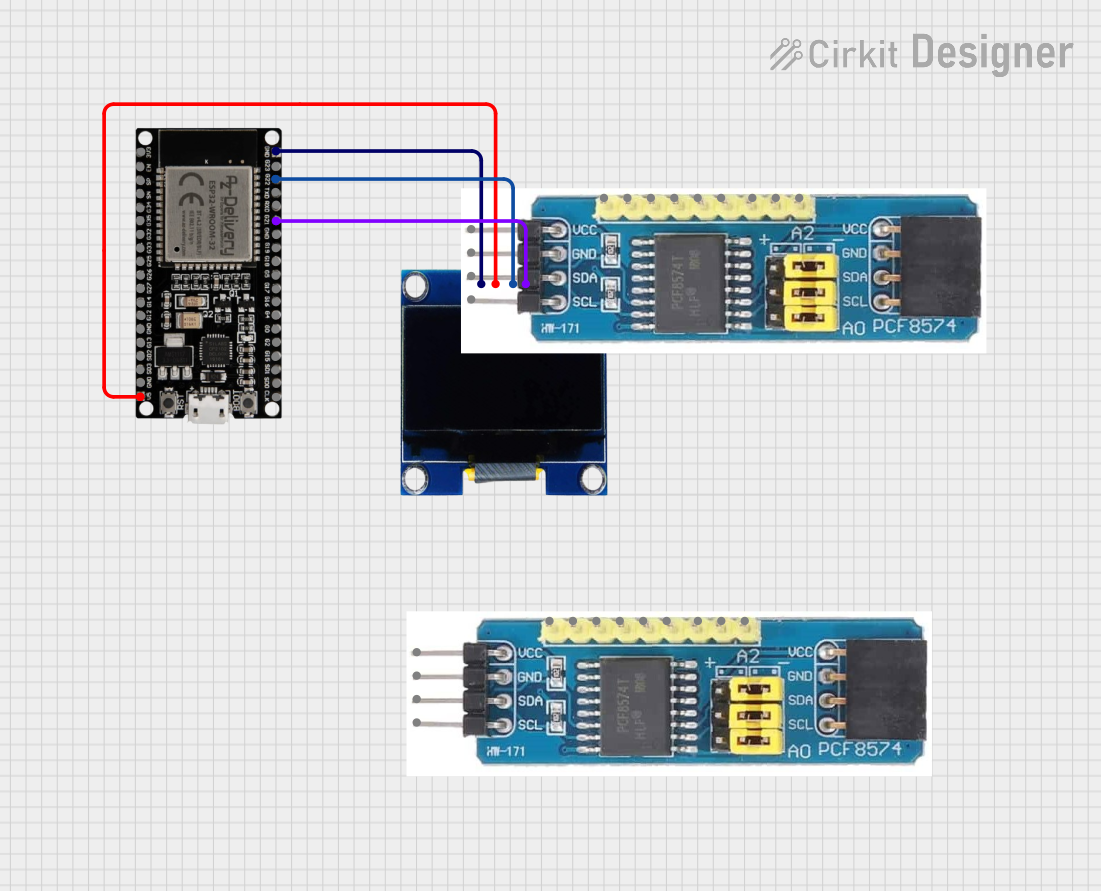
 Open Project in Cirkit Designer
Open Project in Cirkit Designer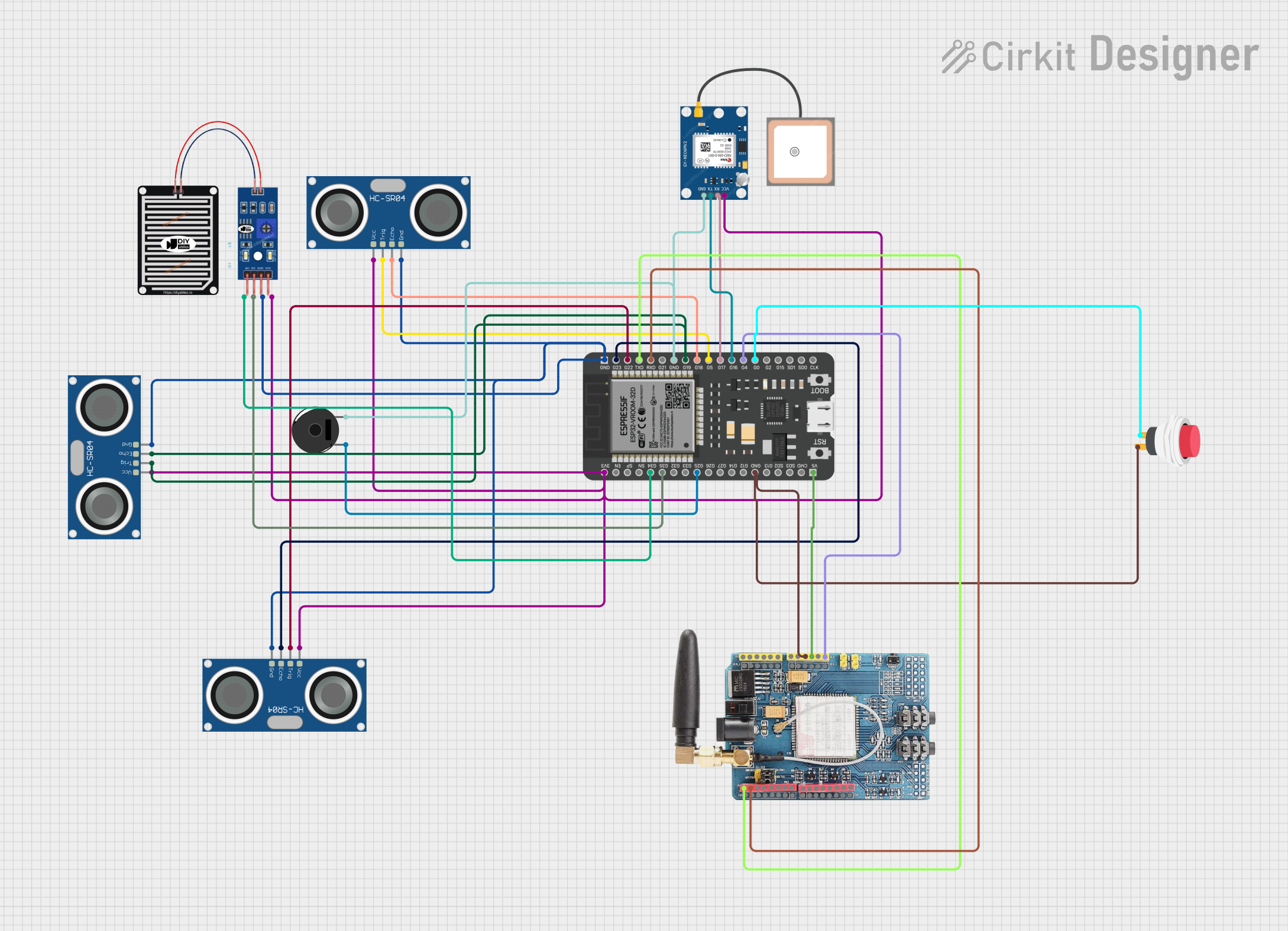
 Open Project in Cirkit Designer
Open Project in Cirkit Designer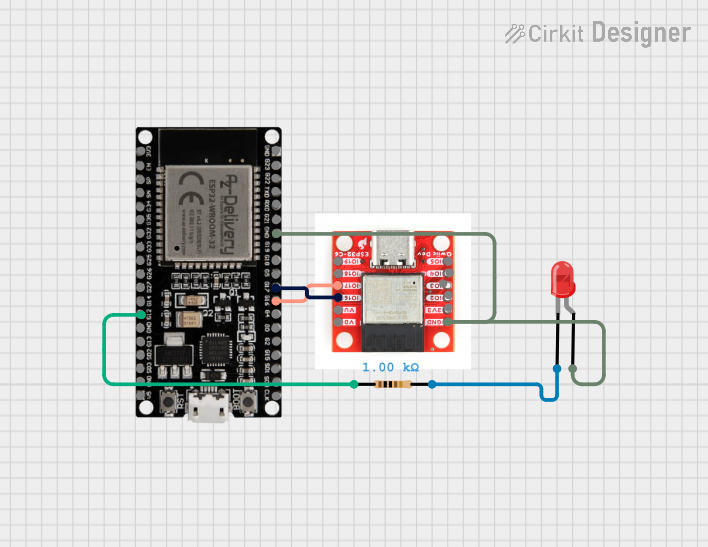
 Open Project in Cirkit Designer
Open Project in Cirkit Designer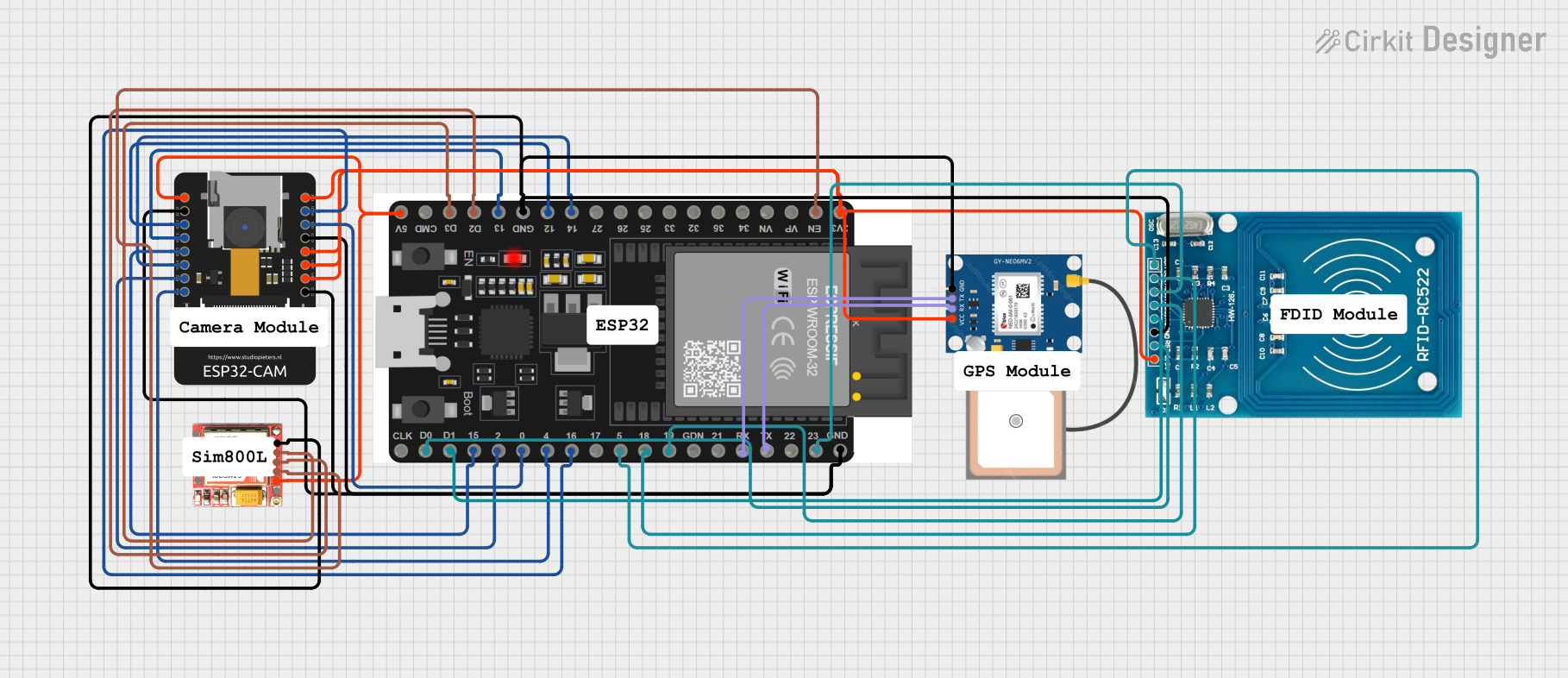
 Open Project in Cirkit Designer
Open Project in Cirkit DesignerExplore Projects Built with ESP32 (38 pins)

 Open Project in Cirkit Designer
Open Project in Cirkit Designer
 Open Project in Cirkit Designer
Open Project in Cirkit Designer
 Open Project in Cirkit Designer
Open Project in Cirkit Designer
 Open Project in Cirkit Designer
Open Project in Cirkit DesignerCommon Applications and Use Cases
- IoT devices (e.g., smart home systems, wearables, and sensors)
- Wireless communication (Wi-Fi and Bluetooth)
- Robotics and automation
- Data logging and remote monitoring
- Prototyping and development of embedded systems
Technical Specifications
Key Technical Details
- Processor: Dual-core Xtensa® 32-bit LX6 microprocessor
- Clock Speed: Up to 240 MHz
- Flash Memory: 4 MB (varies by model)
- SRAM: 520 KB
- Wi-Fi: 802.11 b/g/n
- Bluetooth: v4.2 BR/EDR and BLE
- Operating Voltage: 3.3V
- Input Voltage Range: 5V (via USB) or 3.3V (via VIN pin)
- GPIO Pins: 34 (configurable as digital I/O, PWM, ADC, etc.)
- ADC Channels: 18 (12-bit resolution)
- DAC Channels: 2 (8-bit resolution)
- Communication Protocols: UART, SPI, I2C, I2S, CAN, Ethernet
- Power Modes: Active, Light Sleep, Deep Sleep, Hibernation
- Operating Temperature: -40°C to +125°C
Pin Configuration and Descriptions
The ESP32 (38-pin variant) has the following pinout:
| Pin Name | Type | Description |
|---|---|---|
| VIN | Power Input | Input voltage (5V) for powering the ESP32 via an external source. |
| GND | Ground | Ground connection. |
| 3V3 | Power Output | Regulated 3.3V output. |
| EN | Enable | Enables the chip when pulled high. |
| IO0 | GPIO, Boot Mode | General-purpose I/O; used for boot mode selection during programming. |
| IO2 | GPIO, ADC, PWM | General-purpose I/O; supports ADC and PWM. |
| IO4 | GPIO, ADC, PWM | General-purpose I/O; supports ADC and PWM. |
| IO5 | GPIO, ADC, PWM | General-purpose I/O; supports ADC and PWM. |
| IO12 | GPIO, ADC, PWM | General-purpose I/O; supports ADC and PWM. |
| IO13 | GPIO, ADC, PWM | General-purpose I/O; supports ADC and PWM. |
| IO14 | GPIO, ADC, PWM | General-purpose I/O; supports ADC and PWM. |
| IO15 | GPIO, ADC, PWM | General-purpose I/O; supports ADC and PWM. |
| IO16-IO39 | GPIO, ADC, PWM | General-purpose I/O; supports ADC and PWM. |
| TX0 | UART TX | UART transmit pin (serial communication). |
| RX0 | UART RX | UART receive pin (serial communication). |
| DAC1 | DAC Output | Digital-to-Analog Converter output channel 1. |
| DAC2 | DAC Output | Digital-to-Analog Converter output channel 2. |
| SCL | I2C Clock | I2C clock line. |
| SDA | I2C Data | I2C data line. |
| SPI Pins | SPI Communication | Includes MOSI, MISO, SCK, and CS for SPI communication. |
Note: Not all GPIO pins support all functions simultaneously. Refer to the ESP32 datasheet for pin multiplexing details.
Usage Instructions
How to Use the ESP32 in a Circuit
Powering the ESP32:
- Use a 5V power source connected to the VIN pin or power the board via the USB port.
- Ensure the power supply can provide sufficient current (at least 500 mA).
Connecting Peripherals:
- Use GPIO pins for digital I/O operations.
- Connect sensors or analog devices to ADC pins (e.g., IO32, IO33).
- Use UART, SPI, or I2C pins for communication with other devices.
Programming the ESP32:
- Install the ESP32 board package in the Arduino IDE or use the ESP-IDF framework.
- Connect the ESP32 to your computer via USB.
- Select the correct board and port in the IDE, then upload your code.
Important Considerations and Best Practices
- Voltage Levels: The ESP32 operates at 3.3V logic levels. Avoid connecting 5V signals directly to GPIO pins.
- Boot Mode: Ensure IO0 is pulled low during programming to enter boot mode.
- Power Consumption: Use deep sleep or hibernation modes to reduce power consumption in battery-powered applications.
- Pin Multiplexing: Be aware of pin multiplexing to avoid conflicts between peripherals.
Example Code for Arduino UNO Integration
The following example demonstrates how to blink an LED connected to GPIO2 of the ESP32:
// Define the GPIO pin for the LED
#define LED_PIN 2
void setup() {
// Set the LED pin as an output
pinMode(LED_PIN, OUTPUT);
}
void loop() {
// Turn the LED on
digitalWrite(LED_PIN, HIGH);
delay(1000); // Wait for 1 second
// Turn the LED off
digitalWrite(LED_PIN, LOW);
delay(1000); // Wait for 1 second
}
Tip: Use the Serial Monitor in the Arduino IDE to debug your code and monitor outputs.
Troubleshooting and FAQs
Common Issues and Solutions
ESP32 Not Detected by Computer:
- Ensure the USB cable is functional and supports data transfer.
- Install the correct USB-to-serial driver for your operating system.
Upload Fails with Timeout Error:
- Check that IO0 is pulled low during programming.
- Press and hold the "BOOT" button on the ESP32 while uploading the code.
Wi-Fi Connection Issues:
- Verify the SSID and password in your code.
- Ensure the Wi-Fi network is within range and not overloaded.
GPIO Pin Not Working:
- Confirm the pin is not being used by another peripheral (e.g., ADC, UART).
- Check for proper wiring and connections.
FAQs
Q: Can the ESP32 handle 5V logic signals?
A: No, the ESP32 operates at 3.3V logic levels. Use a level shifter for 5V signals.Q: How do I reset the ESP32?
A: Press the "EN" button on the board to reset the ESP32.Q: Can I use the ESP32 with batteries?
A: Yes, the ESP32 can be powered using a 3.7V LiPo battery connected to the VIN pin.Q: How do I reduce power consumption?
A: Use deep sleep or hibernation modes in your code to minimize power usage.
By following this documentation, you can effectively use the ESP32 in your projects and troubleshoot common issues.